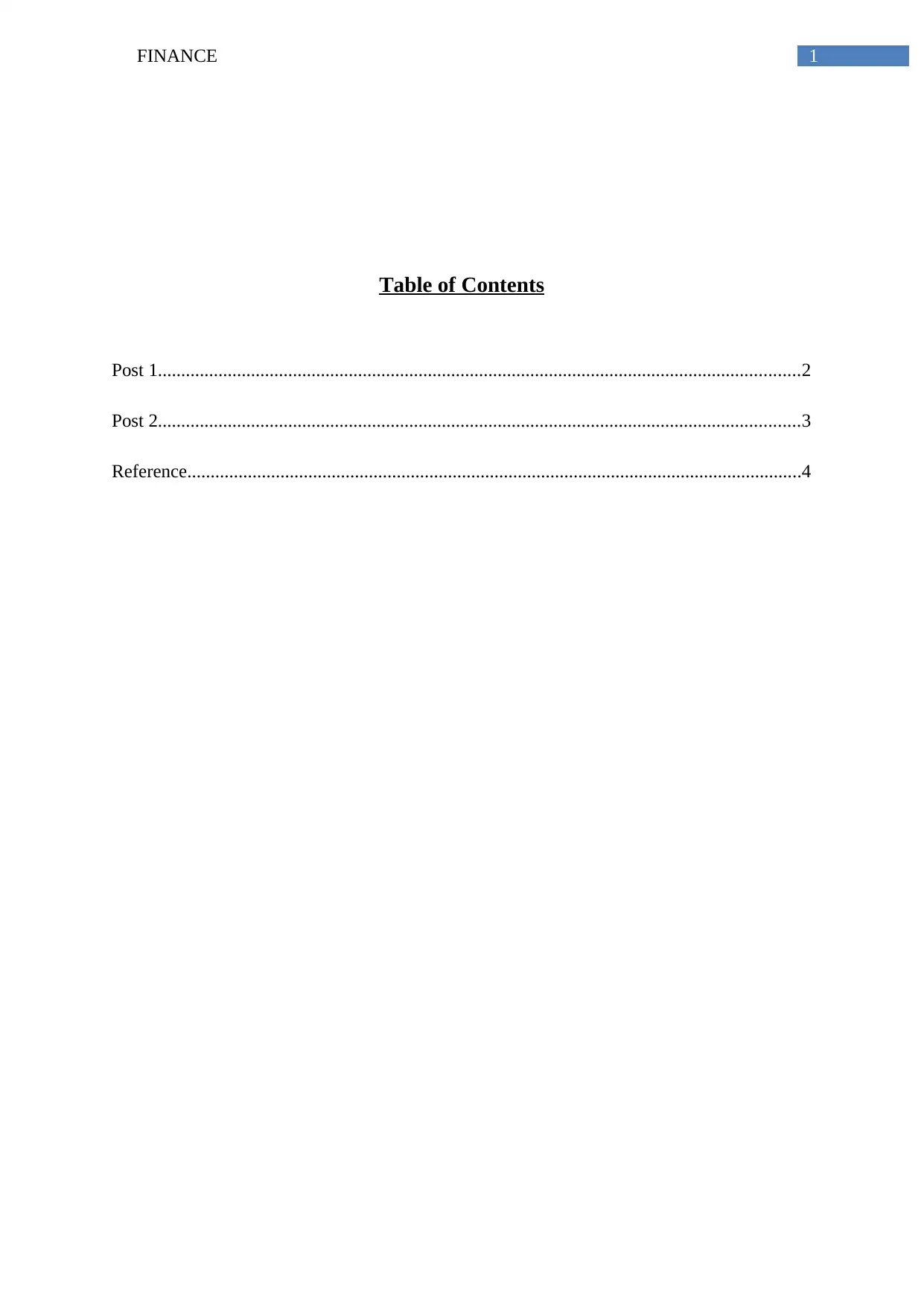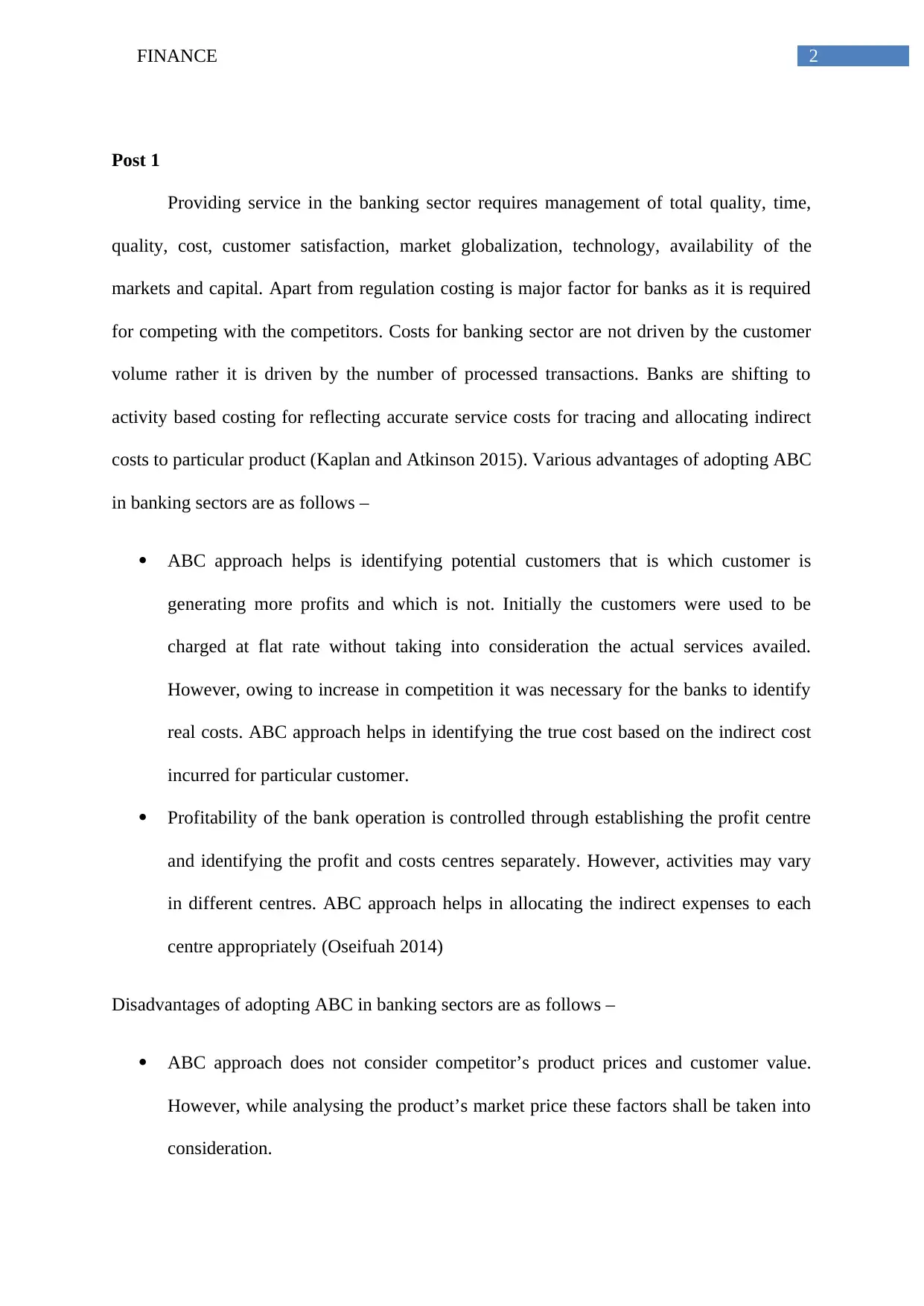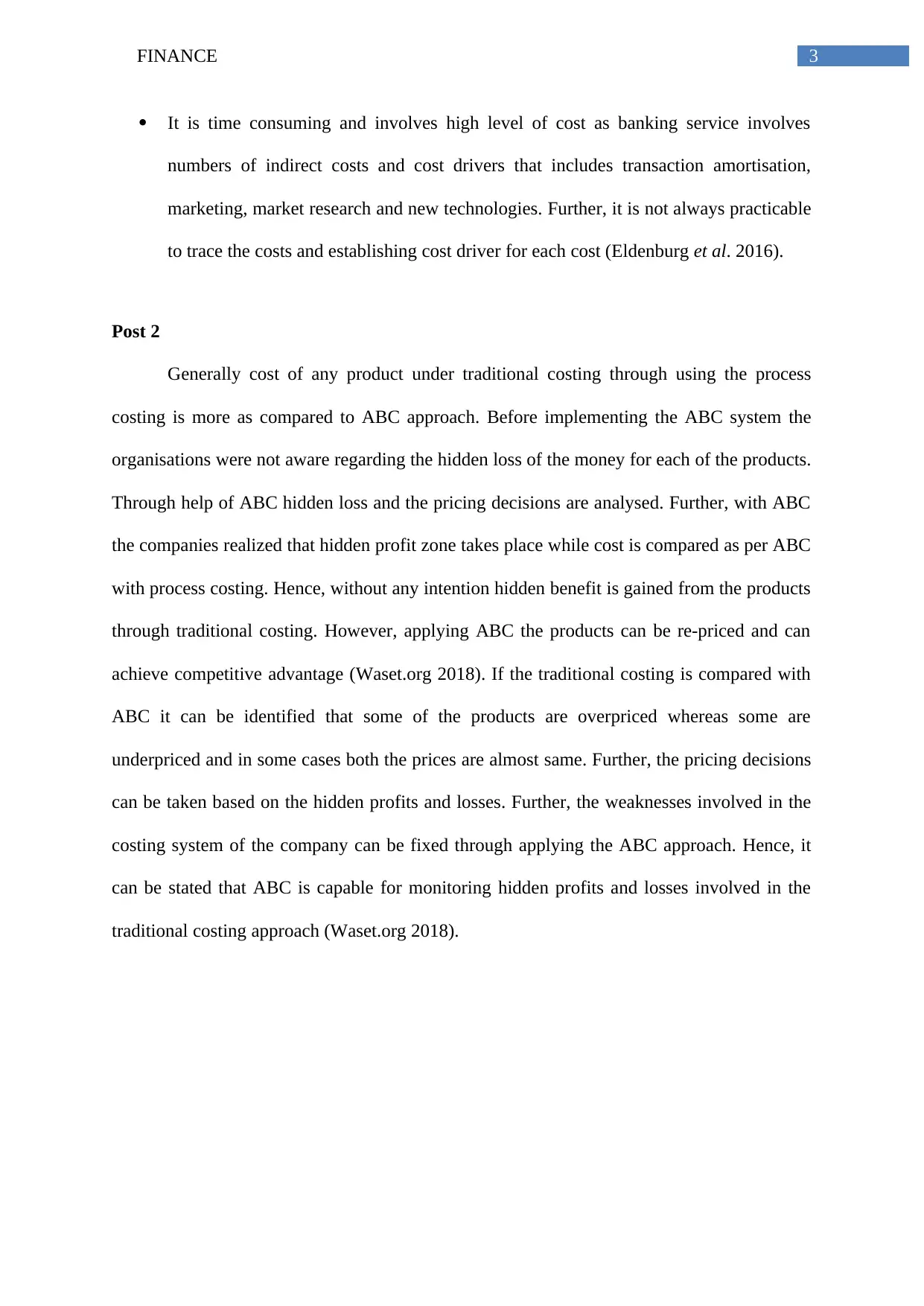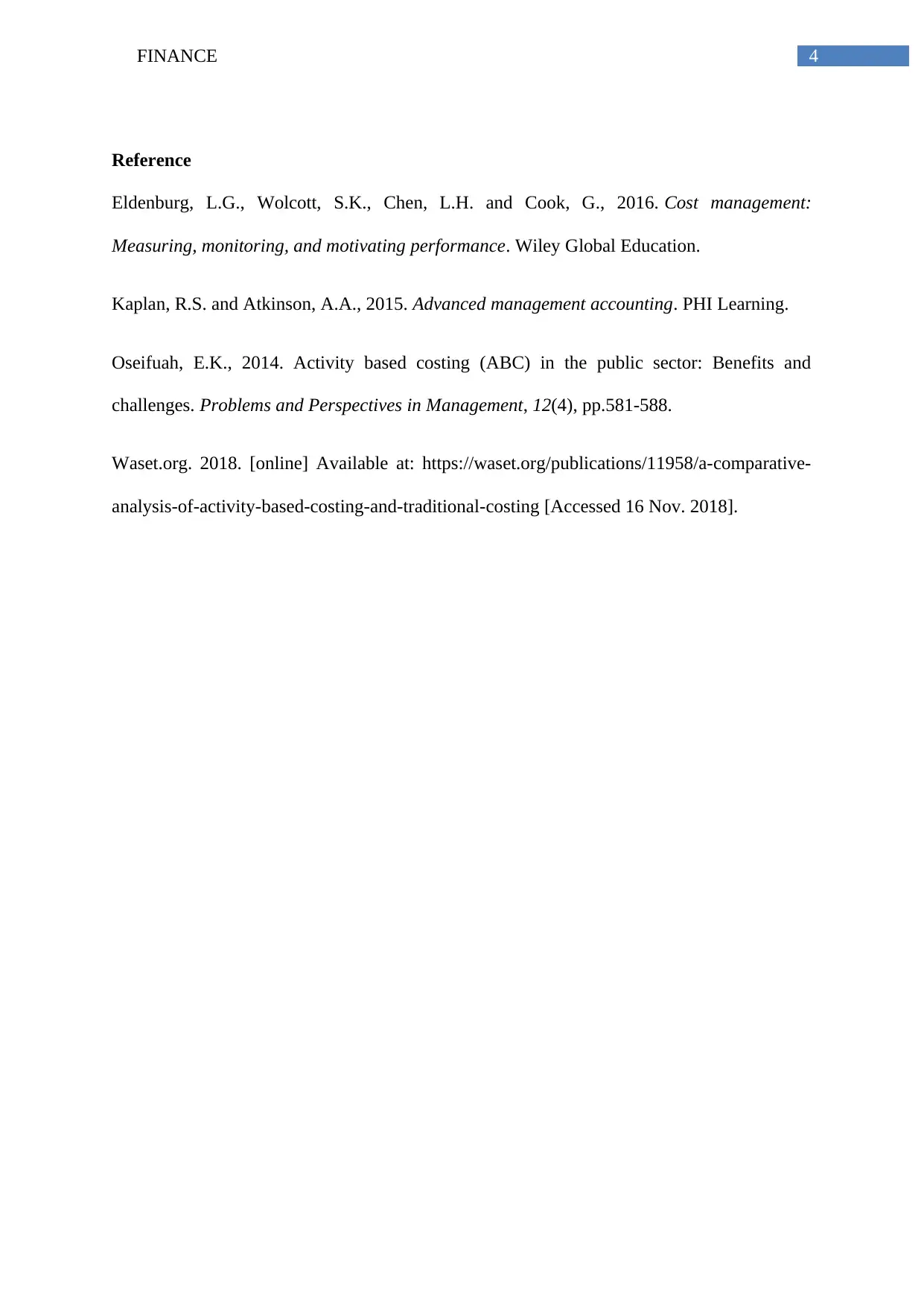University Finance Assignment: ABC vs Traditional Costing in Banking
VerifiedAdded on 2023/05/31
|5
|707
|325
Homework Assignment
AI Summary
This finance assignment delves into the intricacies of costing within the banking sector, examining the application of Activity-Based Costing (ABC) in comparison to traditional costing methods. The assignment highlights the importance of cost management in the banking sector, emphasizing factors such as customer satisfaction, market globalization, and technological advancements. It provides a detailed analysis of the advantages of ABC, including its ability to identify profitable customers and accurately allocate indirect costs, while also addressing its disadvantages, such as its time-consuming nature and high implementation costs. Furthermore, the assignment contrasts the cost of products under traditional costing with ABC, illustrating how ABC can reveal hidden losses and inform pricing decisions. The student concludes that ABC is a superior method for monitoring hidden profits and losses inherent in traditional costing approaches, thus providing a competitive advantage. The assignment includes references to academic sources supporting the analysis.
1 out of 5










![[object Object]](/_next/static/media/star-bottom.7253800d.svg)